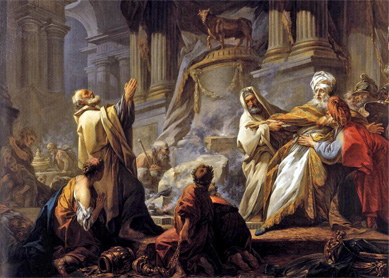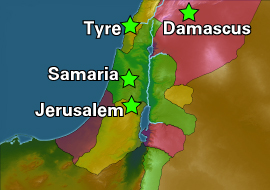Does archaeological evidence allow us to establish the exact borders of independent states in Palestine in the seventh through fourth centuries B.C.E.? I believe it does. These borders are important because in the Late Iron Age no fewer than eight independent nations were settled in the country.
Palestine during the Iron Age was divided among many nations, each of which produced a unique material culture in its own territory, expressed in particular by language, script, pottery, and cult objects. The kingdom of Judah at the end of the period of the monarchy and the Persian province of Yehud were no different: the region had its own distinct material culture. Two types of Judean artifacts are particularly useful for reconstructing the borders of Judah: the pillar figurines unique to Judah, dating to the eighth–sixth centuries B.C.E. and the rosette stamp impressions from the late monarchic age, that is, the seventh and beginning of the sixth centuries B.C.E.
At least 1,500 pillar figurines have been found at Judean sites (almost half of them from Jerusalem itself). And the heavy concentration of rosette seals in Judah and not in the neighboring kingdom of Israel, even at a time when Judah and Israel maintained close relations and likely traded with one another heavily, establishes a clear northern border for Judah.
Although there are far fewer stamp impressions than pillar figurines from the period of the Judean monarchy, primarily because they were in use for a much shorter time, their distribution follows the same southern border.
When we move on to stamp impressions from the Persian period, we see that they come from an area much closer to Jerusalem than the late-monarchic seals do. Furthermore, clay analysis has shown that the earlier stamp impressions came from two production centers, one in the western part of the kingdom and one in the area of Jerusalem. The later Persian period impressions, in contrast, come only from the area of Jerusalem, which means that the southern border of the Judean state in the Persian period had contracted.
According to the biblical sources (for example,
Only two impressions have been discovered outside Yehud: one in Kadesh-Barnea and the other in Babylon. Is there a logical explanation for the location of these two seal impressions? Kadesh-Barnea is situated in the middle of the route between Judah and Egypt, where there was a prosperous Jewish community. There was also a thriving Jewish community in Babylon in this period. Though some scholars think these two anomalous seals are therefore evidence of trade between Yehud and Egypt and Babylon, the shape of the jars, intended for storage rather than shipment, suggests instead that they were being sent to the Egyptian and Babylonian Jewish communities that wanted Judean wine made according to the laws of the Torah. The original storage jars, with their stamps indicating their authenticity, were therefore used for shipping this wine as well.
To sum up, we may say that the archaeological finds corroborate the biblical account on two issues: the borders of the kingdom of Judah, until the destruction of the first temple, included the entire southern part of the country, but the border moved north in the Persian period; and in the Persian period an important connection had been created between the independent state of Judea and the Jewish Diaspora communities in Egypt and Mesopotamia.
Bibliography
- Stern, Ephraim. Material Archaeology of the Land of the Bible, Volume 2: The Assyrian, Babylonian and Persian Periods. New York: Doubleday, 2001.
- Stern, Ephraim. “What Happened to the Cult Figurines?” Biblical Archaeology Review 15/4 (1989): 22–29, 53–54.
- Kletter, Raz. The Judaean Pillar Figurines and the Archaeology of the Ashera. Oxford: Oxford University Press, 1996.
- Stern, Ephraim. Material Culture of the Land of the Bible in the Persian Period, 538-332 B.C. Warminster: Aris & Phillips, 1982.
- Lipschits, Oded, and David S. Vanderhooft. “The Growing Corpus of Yehud Stamp Impressions: New Finds and New Research.” Tel Aviv 34/1 (2007): 1–121.
- Lipschits, Oded, and David S. Vanderhooft. The Yehud Stamp Impressions: A Corpus of Inscribed Impressions from the Persian and Hellenistic Periods in Judah. Winona Lake, IN: Eisenbrauns, 2011.



